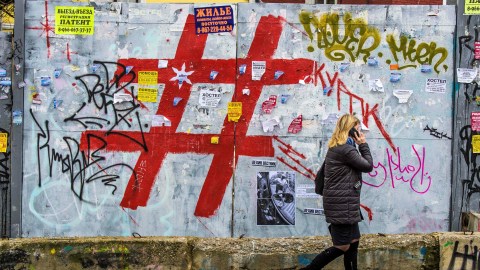New analysis reveals 5 distinct types of Russian trolls

About three million tweets from Russian trolls have been published in an effort to illuminate how foreign agents have been disrupting political discourse in the U.S.
Using social media tracking software, Clemson University researchers Darren Linvill and Patrick Warren collected 2,973,371 tweets from 2,848 Twitter handles traced back to the Internet Research Agency (IRA), an infamous Russian troll factory. The tweets date back from February 2012 to May 2018.
Working with the data-based news outlet FiveThirtyEight, the researchers uploaded the dataset to GitHub where curious parties can investigate it for themselves.
“If you use this data and find anything interesting, please let us know. Send your projects to [email protected] or @ollie,” the GitHub post reads.
In a working paper, Linvill and Warren ran qualitative and quantitative analyses on many of the tweets in an attempt to see if the trolls could be categorized into different types based on their online behavior. The authors wrote:
“We identified five categories of IRA-associated Twitter handles, each with unique patterns of behaviors: Right Troll, Left Troll, News Feed, Hashtag Gamer, and Fearmonger. With the exception of the Fearmonger category, handles were consistent and did not switch between categories.”
The five types:
- Right Troll: These Trump-supporting trolls voiced right-leaning, populist messages, but “rarely broadcast traditionally important Republican themes, such as taxes, abortion, and regulation, but often sent divisive messages about mainstream and moderate Republicans…They routinely denigrated the Democratic Party, e.g. @LeroyLovesUSA, January 20, 2017, “#ThanksObama We’re FINALLY evicting Obama. Now Donald Trump will bring back jobs for the lazy ass Obamacare recipients,” the authors wrote.
- Left Troll: These trolls mainly supported Bernie Sanders, derided mainstream Democrats, and focused heavily on racial identity, in addition to sexual and religious identity. The tweets were “clearly trying to divide the Democratic Party and lower voter turnout,” the authors told FiveThirtyEight.
- News Feed: A bit more mysterious, news feed trolls mostly posed as local news aggregators who linked to legitimate news sources. Some, however, “tweeted about global issues, often with a pro-Russia perspective.”
- Hashtag Gamer: Gamer trolls used hashtag games—a popular call/response form of tweeting—to drum up interaction from other users. Some tweets were benign, but many “were overtly political, e.g. @LoraGreeen, July 11, 2015, “#WasteAMillionIn3Words Donate to #Hillary.”
- Fearmonger: These trolls, who were least prevalent in the dataset, spread completely fake news stories, for instance “that salmonella-contaminated turkeys were produced by Koch Foods, a U.S. poultry producer, near the 2015 Thanksgiving holiday.”

The IRA’s precise goal in trolling U.S. political discourse remains unclear, but the evidence strongly suggests part of its mission was to divide Americans along political and sociocultural lines, and to sow discord within the two major political parties.
“They are all about disruption,” a former official briefed on the intelligence told the Washington Post. “They want a distracted United States that can’t counter Vladimir Putin’s ambitions.”
The researchers highlighted the fact that Russian trolls are still stoking the flames of America’s cultural disarray.
“There were more tweets in the year after the election than there were in the year before the election,” Warren told FiveThirtyEight. “I want to shout this from the rooftops. This is not just an election thing. It’s a continuing intervention in the political conversation in America.”





